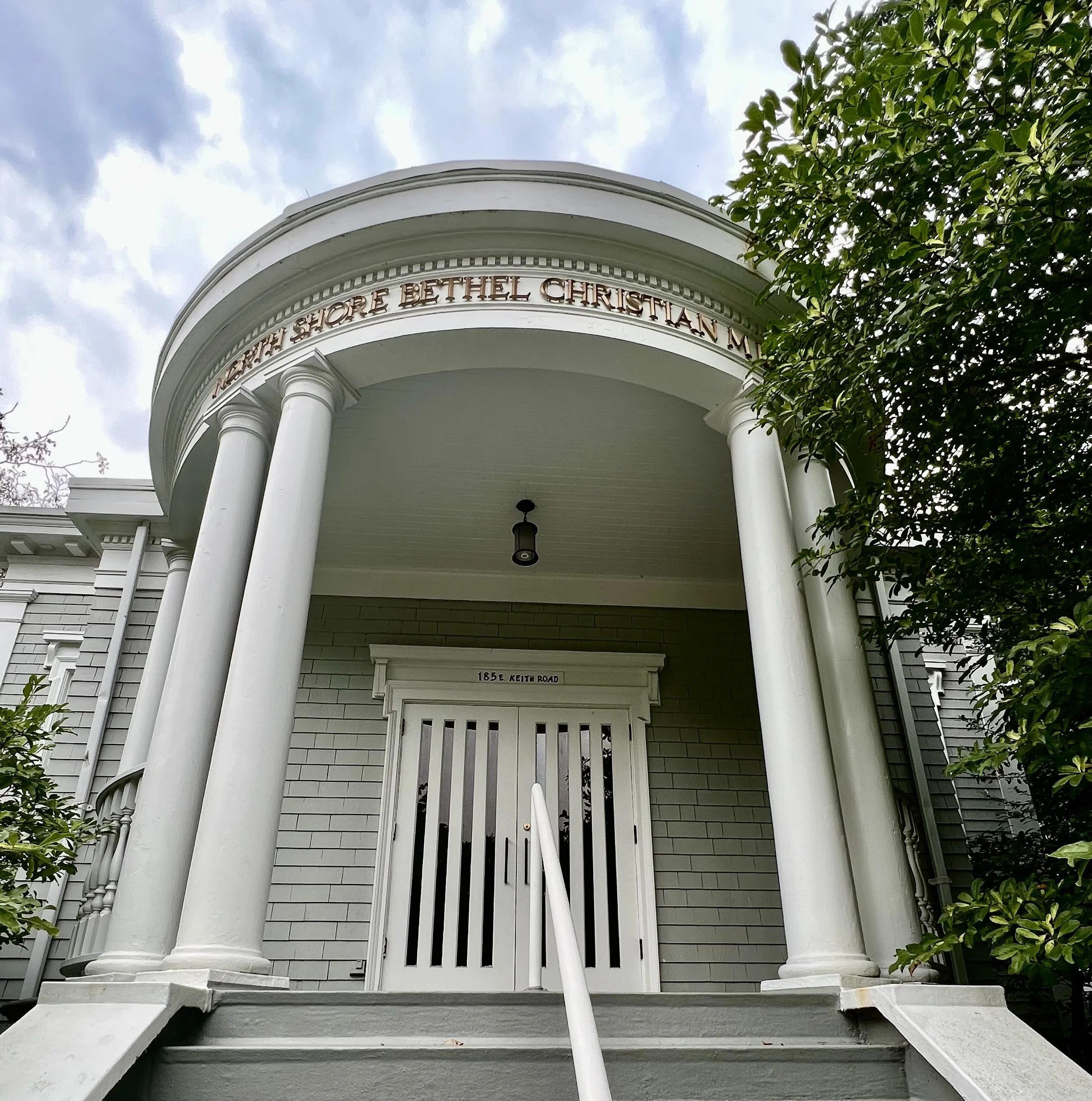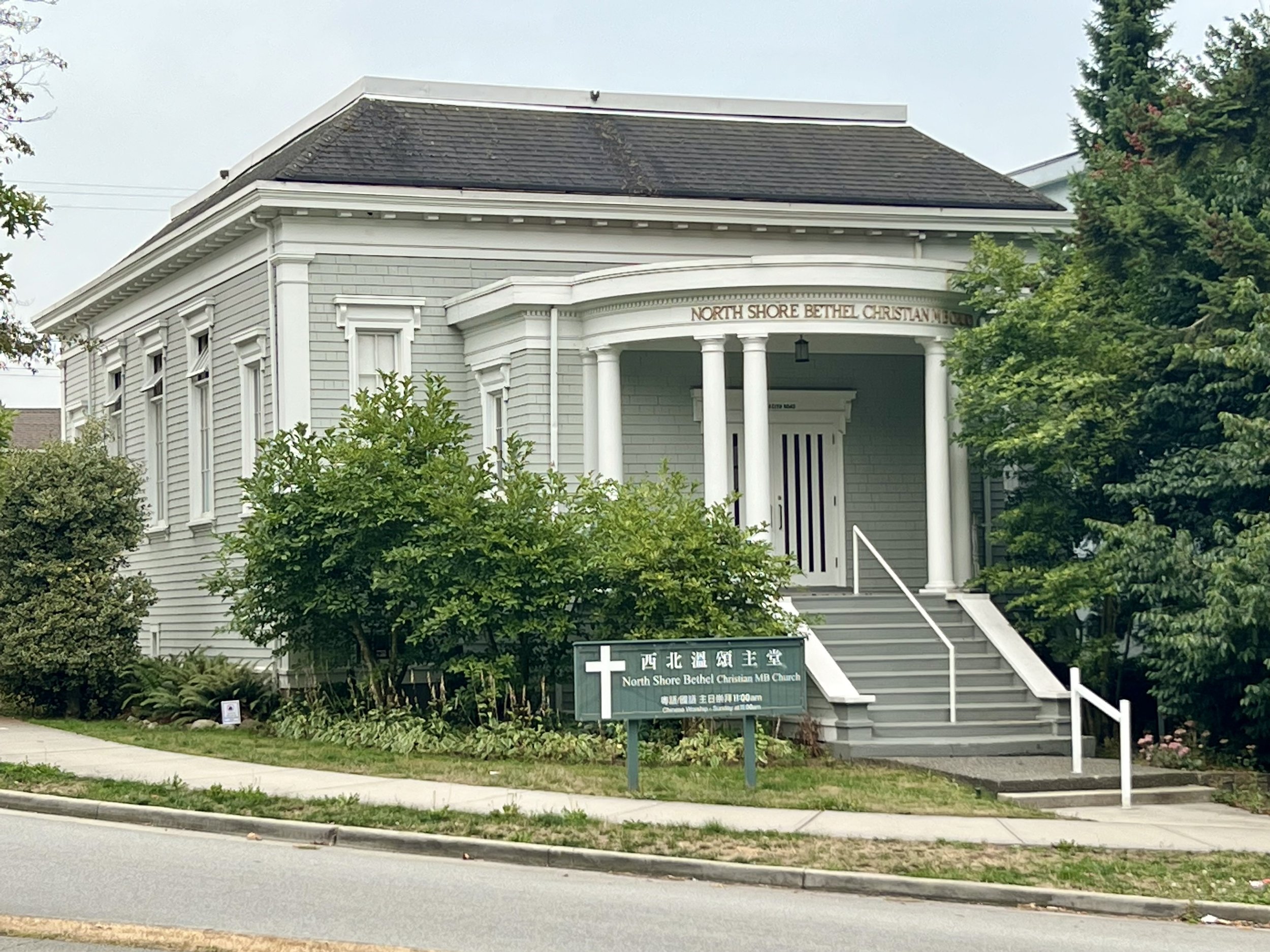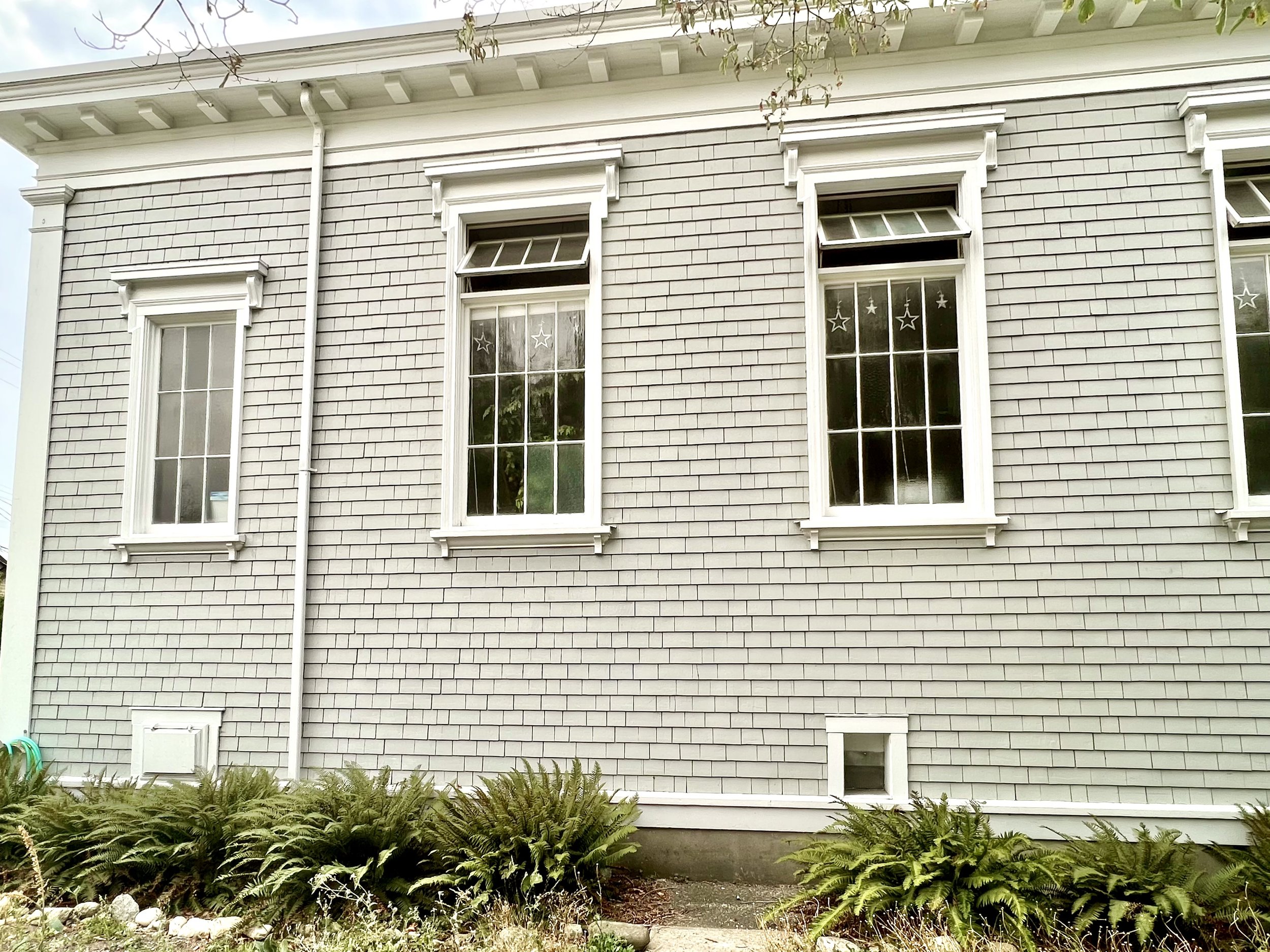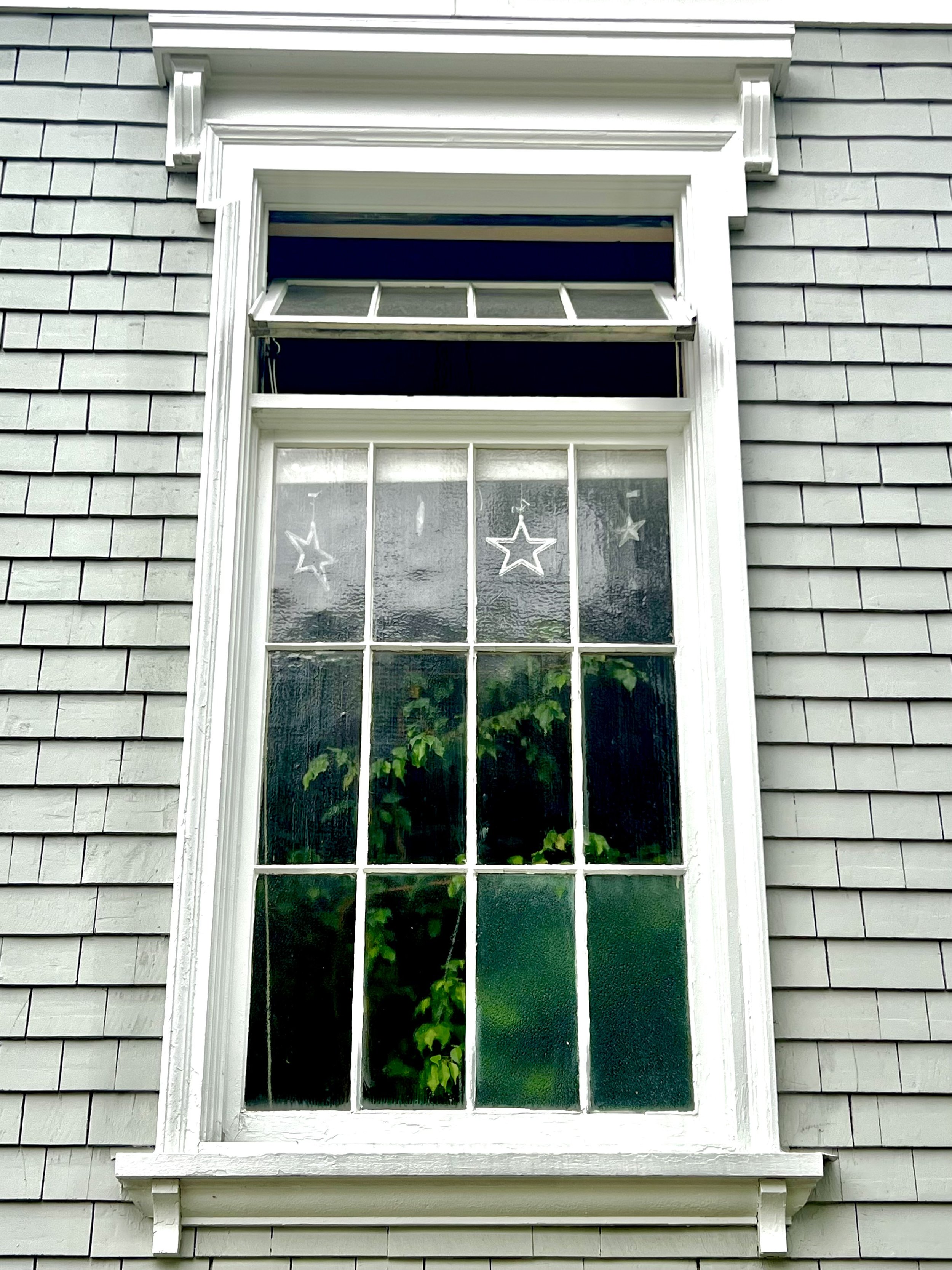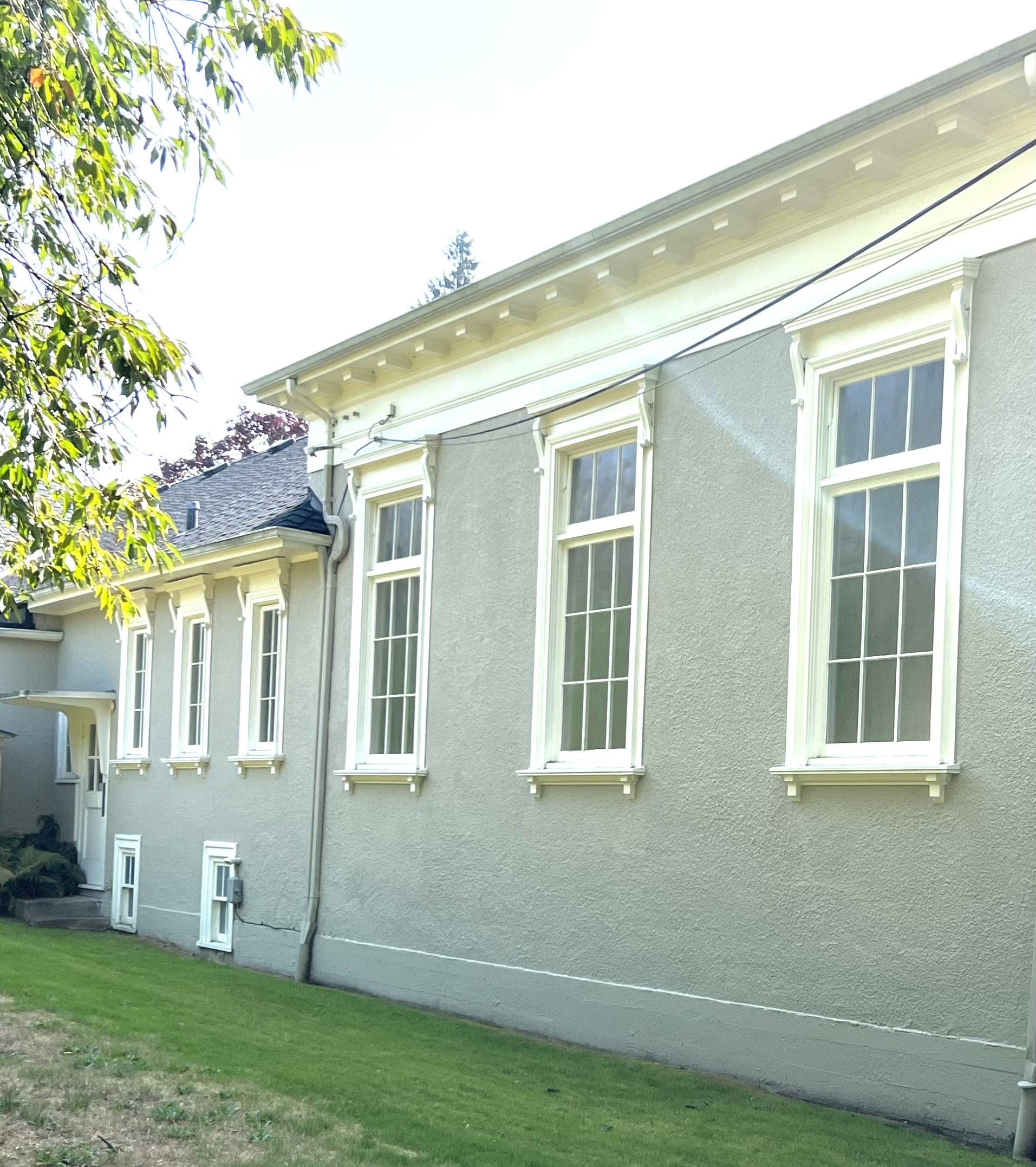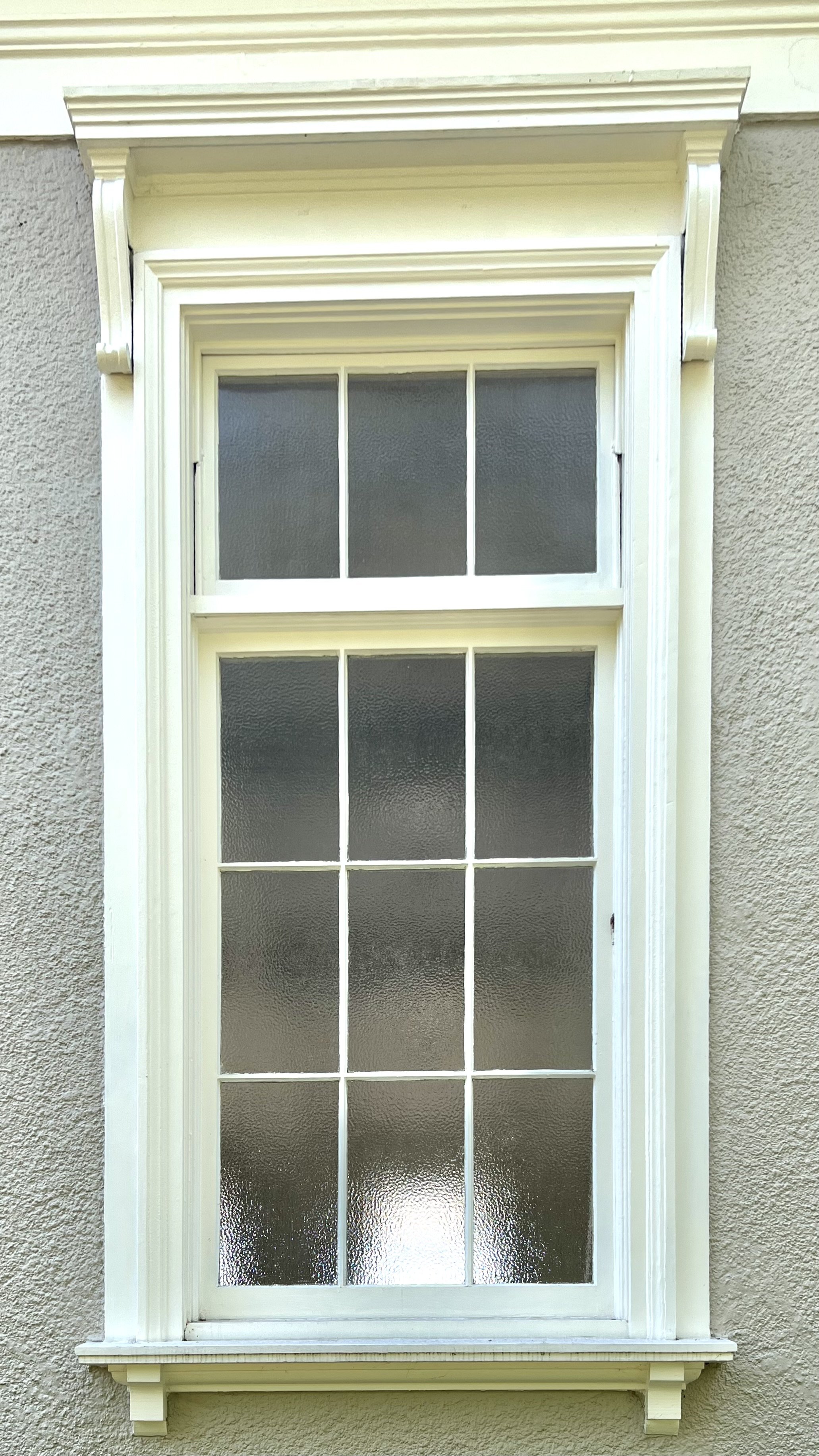At the corner of E. Keith Rd and St. George’s is a church you may have seen many times driving east on Keith Rd and wondered how such an unusual structure came to be built in the area.
The building was commissioned in 1923 by the Christian Science Church (formally known as The Church of Christ, Scientist) which started its North Vancouver branch in 1912, a branch of the home church called the “Mother Church” in Boston, Massachusets. The naming structure of the Church is such that each building in a new place is named after the order it was built, so it was named “The First Church of Christ, Scientist”. It was designed by prominent architectural firm Honeyman and Curtis (est. 1902), who had already designed churches for a number of denominations as well as buildings for CPR and the BC government, and held some prestige in their field. The contracting company Stewart and Coltart did the construction.
At the time, Victoria Park, a traditional English-style promenade park with formal pathways and part of “The Green Necklace,” (a series of North Vancouver parks conceived in 1907 as part of North Vancouver’s City Plan and made of inter-connected green spaces in a necklace shape) had already been there for about 20 years. Around the time the church was commissioned, the WW1 Cenotaph had just been erected in the park. Traffic, up until the year before the church property was bought, had still been driving on the left-hand side of the road. The horse trough on the left-hand side of Victoria Park West is a reminder of this. The landscape was low with houses, very different than it is today.
Decades later, the houses began to be replaced by tall apartment towers which eventually circled the park. The park and this church are the only remaining built structures that remain from 1925 and earlier in the park area.
The church at 185 E. Keith Rd, like many Christian Science churches around the Vancouver area, and even North America, is built with elements of Classical architecture. Classical architecture, in a nutshell, is architecture that derives its qualities from Ancient Greek and Roman architecture, placing importance on strength, beauty, symmetry, utility and durable building materials. There are often columns, a strong, bulky shape to the building, tall windows, and an elaborate facade.
These design elements feature prominently in the design of 185 Keith Rd, most notably the semi-circular, centrally-placed entry portico with its 6 columns. This portico, along with the mansard roof, boxy shape and tall windows with rather elaborate wooden decoration around the frames add a sense of strength and grandeur to what would otherwise be a rather small, rectangular and otherwise nondescript building. The wooden dentils on the portico facade and all around the roof under the soffit and the facade mouldings that look like columns further add grandness and beauty to the building. The original facade was made of wooden siding. The building is still clad in wooden shakes, but I’m not sure if they’ve been replaced or are original. The cladding adds a dose of West Coast style to the building.
The towering apartments and trees that dwarf this building today are absent in this photo from the 1920s. Only some houses (as seen on the left) and Victoria Park were built at the time, making the church look more imposing than it does today. The beautiful, tall windows seen here on the east side of the building were obscured in 1952 by the building of a wooden apartment building very close next door.
First Church of Christ, Scientist, 185 Keith Rd., built in 1925. Photo taken 192-?
Photo courtesy of MONOVA, Museum and Archives of North Vancouver, INV. 11414
A current view of the church showing the opposite angle from the historic photo, taken while standing in Victoria Park. Every detail of this building is the same as it was when it was built save for the removal of the short balcony decoration that used to grace the top of the portico. I’m not sure when it was removed or why. Photo courtesy of Jenny Morgan
Photos of the western side of 185 E. Keith Rd. The windows have beautiful, carved wood details and what look to be the original, multi-paned glass windows. The middle three windows are surprisingly large in person. Photo courtesy of Jenny Morgan
Inside the rotunda at the front door of 185 E. Keith. Photo courtesy of Jenny Morgan
Although not the same design as the Keith Rd Church in North Vancouver, this West Vancouver Christian Science church below, built in 1927, shares the classical design elements of symmetry, a grand entrance with pillars, a heavy, box shape and the high, multi-paned windows with wooden detailing. At some point, the entrance was replaced by a modern addition along the front of the building which is used as a “Reading Room” (a space filled with reading materials related to Christian Science and a place to read, pray and reflect on the faith), but the original building was very much a fully classical construction. Note the star pattern on the balcony is the same as the top of the 12th Ave Church in Vancouver shown further along in the post.
Photo by Rupert Harrison taken 193-? of First Church of Christ, Scientist, located at 714 20th Street, West Vancouver.
Courtesy of West Vancouver Archives, CA BWVA F061-S08-IT916
A present-day photo showing 714 20th St. with the original window at the top and the original roofline still present behind the addition. The main entrance is now on the east side of the front rather than the centre and a modern take on the pillar was added with a row of boxy pillars facing the entry door. The balcony detailing along the eastern roofline shown in the historic photo is also gone. Photo courtesy of Jenny Morgan
The side of 714 W. 20th St. is very similar in design to the Keith Rd church in North Vancouver. W. 20th is a longer building and isn’t as plain a box shape as Keith Rd, but both churches have long rows of multi-pane windows with similar decoration in two sizes as well as the dentil molding under the soffit. Photos courtesy of Jenny Morgan
This church below on 12th Ave in Vancouver, built also in 1925, was likely built for a larger congregation with more capital to build than the North Vancouver congregation had, and the building is subsequently quite large. It definitely has classical design elements, but there is a distinct 1920s aesthetic apparent as well, as compared to First Church on Keith Rd, which could have been built much earlier and still would have easily fit into an earlier time period.
When I was a small child my parents were Christian Scientists and I came here to play in the playroom while my parents attended church. Partly my memories are fond of this building because the playroom had the most wonderful toys that I remember to this day- include a bottle of bubbles that seemed to make hundreds with one blow! But also, even though I was a small child without any knowledge of architecture, I remember loving the way the building looked and being quite awed by its beauty. To this day, I make a point to drive by it when I’m in the area and I believe that some of my interest in architecture was sparked by my experience with this building.
1900 W. 12th Ave. Second Church of Christ, Scientist. Taken by City of Vancouver Planning Department in 1986 as part of the heritage inventory. Designed by Perry and Kerr architectural firm.
Courtesy of City of Vancouver Archives. COV-S639-2-F26-: CVA 791-0778
How did this type of design become popular for Christian Science Churches? Although there isn’t a standardised architectural style for Christian Science Churches, and there are examples across North America without Classical design elements, it was still quite a common style to build in, including in the Vancouver area. The “Mother Church”, built in Boston, Massachusetts in 1897, was built with numerous domes, pillars, elaborate windows and many other Classical architectural features. It was large and imposing and wouldn’t look out of place in an old Italian town. Since Christian Science churches were usually attached to the Mother Church in Boston, they looked to it for design inspiration, despite the Church not having an official statement about its architecture. According to Paul Ivey, an art history professor at the University of Arizona, in his article “American Christian Science Architecture and its influence” wrote “Architecture became the chief visible proclamation of Christian Science’s presence in American cities and towns, and also in Europe”. I would extend this statement to Canada as well. Ivey also mentions that there were debates starting in 1907 about what was appropriate for Christian Science churches. This revolved around whether Classical architecture associated more with primitive Christianity or more Romantic architecture associated with ecclesiastical and historical Christianity was more appropriate. It seems that a Classical style continued to be the more popular choice in the majority of cases.
As far as to why this style was chosen in the first place and perpetuated, it may have to do partly with the Christian Science faith itself. Paul Ivey points out that in Science and Health the definition of ‘church’ is as follows: “The structure of Truth and Love; whatever rests upon and proceeds from divine Principle. The Church is that institution, which affords proof of its utility and is found elevating the race, rousing the dormant understanding from material beliefs to the apprehension of spiritual ideas and the demonstration of divine Science, thereby casting out devils, or error, and healing the sick. Further to that, I think understanding some of the background of the faith helps in understanding it’s built-style and this definition of ‘church’. Here’s a bit of background for those unfamiliar with it:
In 1866, Mary Baker Eddy (1821-1910), an American who had studied the bible long-term, was healed after suffering ill health due to a critical injury, and she attributed it to reading about one of Jesus’s healings in the bible. She concluded that it wasn’t a miracle, as such, but “an effect of understanding God’s all-power and love”, and “as provable today as it was in biblical times” according to christianscience.com. She spent years studying this idea and became determined to share this understanding with others. She became a healer and wrote a religious textbook called Science and Health with Key to the Scriptures which is still a key text in Christian Science. Her hope was that the ideas she wrote about would become part of the wider Christian landscape and wasn’t intending to start a new faith, but this didn’t come to pass and her ideas and texts were eventually organised into a new Christian denomination.
Although a Christian denomination, it differs from other Christian faiths in that it takes a scientific view of spirituality by basing it’s healing-one of the main aspects of the faith- on what members consider “universal and dependable laws of God.” Christian Scientists believe that understanding these laws gives them the power for “spiritual regeneration and healing.”
According to the organisation Canada’s Historic Places in their Statement of Significance about the Keith Rd church building, “This church’s design has strong cultural and religious meaning for its congregation reflecting the rational principles of the Christian Science Church.” These classical design elements help reflect these rational principals.
The Church landscape on the North Shore in the early 20th c. was predominantly made up of Christian denominations and there was quite a variety of them including Unitarian, Methodist, Baptist, Catholic, Presbyterian, Evangelist and Anglican, but Christian Science didn’t come to the Vancouver area until around 1910.
The Christian Science Church was established by the 1870s in the United States but the faith took awhile to reach Vancouver. However, by 1910, there were Christian Science churches in Vancouver and it wasn’t long before North Vancouver had a congregation. I read accounts in old Vancouver newspapers about a well-attended talk given at the old Vancouver Opera House by a member of the “Mother Church” in Boston, and a nearly full-page spread was devoted to its details in the March 15th, 1910 edition of The Province newspaper. Talks such as these raised public interest in the faith.
Christian Science came to Vancouver area around 1910, and by 1912 it made its way to the North Shore. By 1923, members, who were meeting at a “Reading Room” at 800 Lonsdale, were keen to have a church to meet in, and through fundraising and borrowing funds, they bought a lot in 1923 at the SE corner of Victoria Park with beautiful views of Burrard Inlet and Vancouver, and by mid-1925 had the 150 seat church built.
It’s design and location at the corner of Victoria Park have made it a landmark in the area, and it has been recognised both by the City of North Vancouver in their Heritage Register with a Heritage “A” ranking and by “Canada’s Historic Places” which formally recognised its heritage value in 1995.
In 2007, it was sold to the North Shore Bethel Christian MB Church which it remains to this day. It went the way of other Christian Science churches, like churches of other Christian Denominations around North America, which have been converted to homes, churches of different denominations and various other uses when congregations became too small to support them any more.
185 E. Keith Rd is a unique and beautiful building in the Victoria Park area that look timeless thanks to its Classical architectural features. Its design embodies the Classical ideas of durability, strength and symmetry, and this, paired with its beauty and detail have likely helped this building remain intact for nearly the last 100 years. A building that is less well-built and less iconic has a higher chance of being demolished and re-built when it changes hands and is less likely to be designated Heritage ‘A’. If it hasn’t been the cause for saving the building so far, it may save it in the future.
This design aesthetic paired well with the Christian Science faith, but at the same time, it is without denomination, and can be appreciated by anyone.
I wonder if 185 E. Keith Rd. will always be a church or if the future holds something else for this beautiful building. I hope that whatever its future is, the building remains as a landmark for years to come.
Sources: historicplaces.ca, Monova archives( Museum of North Vancouver archives), City of North Vancouver Heritage Register, West Vancouver Archives, newspapers.com, christianscience.com, firstchristiansciencechurchnyc.com, marybakereddy.org, letsgobiking.net, wtbaker.com, thespruce.com, sentinel.christianscience.com, marybakereddylibary.org
Except where indicated, text and images Copyright @ North Shore Heritage and Jenny Morgan. All rights reserved. Republication in whole or in part is prohibited without the written consent of the copyright holder.

